
Bridging the Gap between Science and the Field
Blog, Careers, Careers - Blog, Careers in Plant Science, Research, Research BlogMany journal articles in the plant sciences – including some of mine – finish with statements like “these findings can potentially contribute to solving the challenge of feeding the world’s growing population whilst saving the planet’s limited resources”. That is a noble ambition. Sadly,…
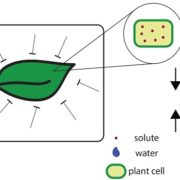
ABA accumulation in dehydrating leaves is associated with decline in cell volume not turgor pressure
Blog, Plant Science Research Weekly, Research, Research BlogDesiccating leaves show increased ABA levels triggered by low turgor – right? Apparently not! The pressure chamber experiments showing increased ABA levels in desiccating leaves are inconsistent when the entire leaves are enclosed in the chamber. Sack et al. proposes that the turgor pressure is increased…
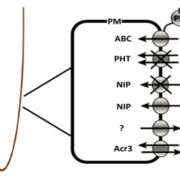
Review: New molecular mechanisms to reduce arsenic in crops ($)
Blog, Plant Science Research Weekly, Research, Research Blog“Over 200 million humans are at risk of arsenic poisoning,” due to arsenic in groundwater and its uptake into crops. Our understanding of the transporters through which arsenic enters the plant, moves through the plant, and enters the seed has increased substantially in recent years, opening the…
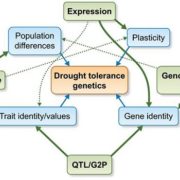
Review: The genetics of drought tolerance in conifers
Blog, Plant Science Research Weekly, Research, Research BlogChanging climates mean changing rainfall patterns, which can have serious consequences for long-lived plants such as conifers. Moran et al. provide a thoughtful and readable overview of the strategies that enable some conifer species to survive drought. They start by discussing the different definitions…

Review: Plant hormone transporters: what we know and what we would like to know
Blog, Plant Science Research Weekly, Research, Research BlogHormones are signaling molecules, and in most (but not all) cases part of their function is to convey information from one cell or tissue to another, sometimes from cell-to-cell and sometimes through vascular tissues. Park et al. review our current state of understanding of transporters for diverse…
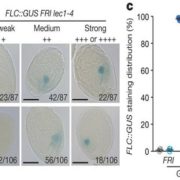
Embryonic epigenetic reprogramming by a pioneer transcription factor in plants ($)
Blog, Plant Science Research Weekly, Research, Research BlogPioneer transcription factors are a special type of transcription factor that are able to access their target sequences in condensed chromatin. They are often associated with changes in cell fate and developmental switching. Tao et al. showed that the seed-specific transcription factor LEAFY COTYLEDON1…
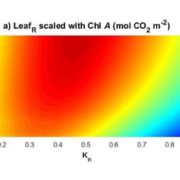
Chlorophyll can be reduced in crop canopies with little penalty to photosynthesis
Blog, Plant Science Research Weekly, Research, Research BlogThe effect of reducing leaf chlorophyll content on canopy CO2 assimilation (Acan) is somewhat contentious. Walker et al. obtained data from 67 soybean accessions to parameterise a canopy-root-soil model (MLCan) in order to simulate the effect of altering chlorophyll levels on Acan. There was no increase…
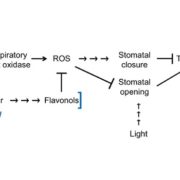
ABA-induced reactive oxygen species are modulated by flavonols to control stomata aperture
Blog, Plant Science Research Weekly, Research, Research BlogMuch of our knowledge concerning ABA-induced stomatal closure comes from genetic models such as Arabidopsis and Vicia faba. Watkins et al. explore the mechanism of ROS production in this abiotic stress pathway in an important agricultural crop: tomatoes (Solanum lycopersicum). Specifically, they are…
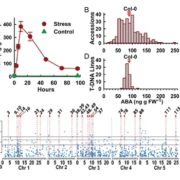
Natural variation identified genes affecting drought-induced abscisic acid accumulation in Arabidopsis thaliana ($)
Blog, Plant Science Research Weekly, Research, Research Blog
Dissecting the genetic controls of ABA is challenging, granted the complex modulation of ABA turnover and redundancy of the hormone perception machinery. In the recent study, Kalladan and colleagues explored natural variation of low-water-potential induced ABA accumulation. Using heuristic GWAS,…

